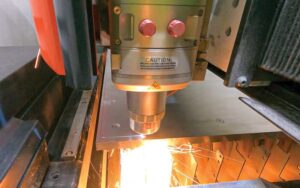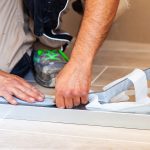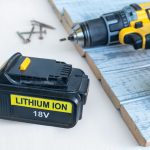
Proper fabrication of architectural metals begins with suitable design and specification. While cutting and folding can be done with equipment as simple as a hand shear and portable folder, the metal industry has evolved steadily with both equipment and control advancement that allows for greater design flexibility at tighter tolerances and higher efficiency.
Projects begin with quality control and verification of the incoming sheets. Visual inspection of the material to verify edge conditions, lack of damage, and size, for example, is all important. As the industry places a large emphasis on aesthetic appeal in the final product, manufacturers are heavily reliant on the quality of the incoming raw materials even prior to fabrication.
Material manufacturers have certainly risen to the expectations of their clientele. Painted goods have never been better, and materials are coming in flatter than ever, not to mention to tighter specifications. They are also better crated to prevent damage in transit, whether that be on a local dedicated truck or running the gauntlet of transcontinental sea container, rail terminal, and LTL.
Sheets are subsequently blanked into usable parts before heading to any folding operation. While this is most typically done with a powered shear, other options include slitting; more complex shapes or parts that need mounting holes, countersinks, or perforating can be produced via laser, turret, router, or water jet.
Blanked parts for light gauge trim and flashing are typically folded on a CNC brake, programmed for both desired dimension and angle. These folders are most typically found in 3,048- to 3,658-mm (120- to 144-in.) widths, though machines can be found at 9,144-mm (360-in.) widths—and even longer. As these machines continue to increase within the industry, so does the popularity of bidirectional folding to eliminate the need for “helicoptering” long parts, fabricate longer parts more efficiently, and save space and requisite skilled labor.
As part complexities rise, so does the sophistication of the machinery necessary to fabricate those parts. Traditional folders with segmented tooling provide one solution and, depending on size, multiple setups can be arranged down the length of the folder at the same time. Therefore, a piece can go from a blank to a finished part without having to be staged and handled multiple times.
Press brakes are another machinery option that can be implemented. In contrast to a traditional folder, a press brake uses upper and lower dies to “air bend” metals. The outside of the bend is pushed into a V-die to achieve a very precise angle, and gauges control where on the material this occurs. While a press brake can be utilized for very thin, light gauge material, its design and capability really shines with heavier materials. Almost all metal materials over 11 ga/3 mm/0.125 will be folded using a press brake, and capacity is determined by the tonnage of the press, the width of the V-die, and the part material, length, thickness, and properties. The finest press brake tooling is precision ground, hardened, and segmented and thus can fold not only long and heavier parts, but also intermittent bends, tapers, and variable angles.
There are many ways to process sheets into usable, aesthetically pleasing architectural forms, and, typically, these operations can be performed by multiple different types of machinery. The demand for unique, heavier, and larger parts will begin to inform more specialized equipment to meet the challenge and even the utilization of multiple types of machinery to produce both a formable blank and a finished product.
Ben Kweton is president of Sheet Metal Supply, Ltd. Founded in 1991, Sheet Metal Supply is a leading fabricator/supplier of custom-formed perimeter edge systems, wall facades, flat lock tiles, substructural components, ES-1 rated products, architectural zinc, glazed-in panels, standing seam, and much more. For more information, visit sheetmetalsupplyltd.com.





